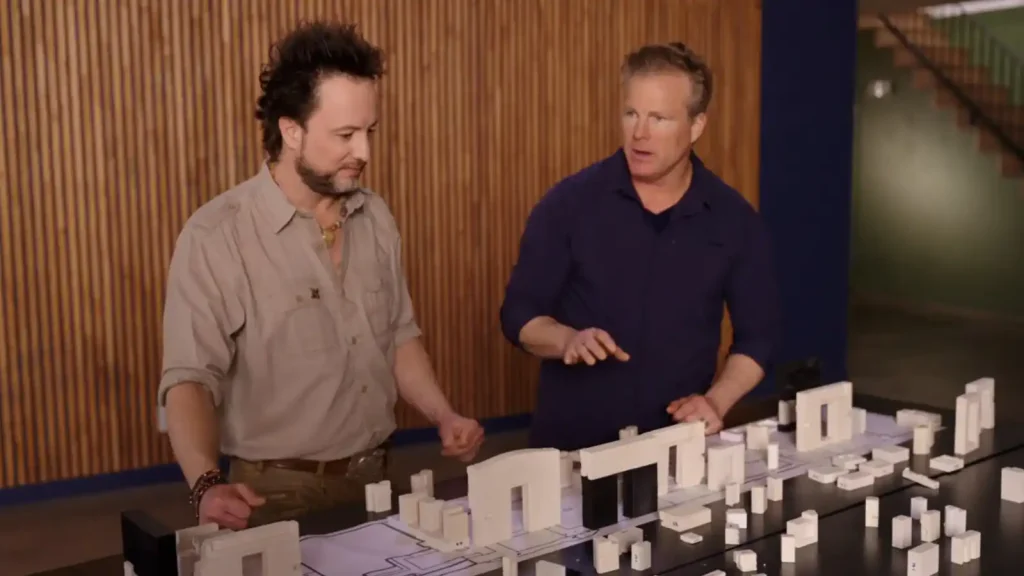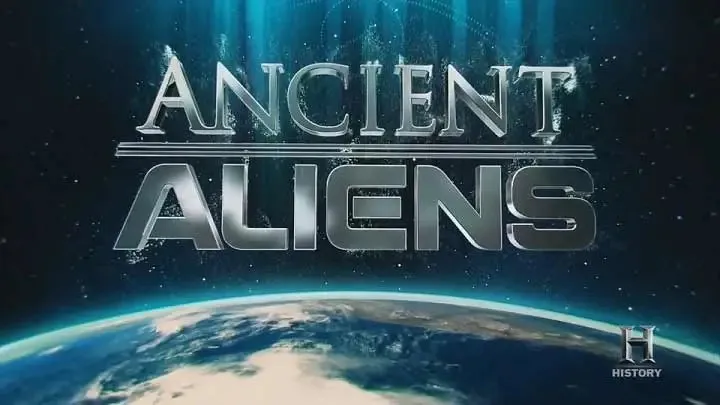Ancient Aliens – Season 20, Episode 20 | Resurrecting Puma Punku
Nestled high in the Bolivian Andes lies Puma Punku, an ancient archaeological site that has baffled historians and archaeologists for generations. This prehistoric complex is renowned for its immense stone blocks, some weighing over 100 tons, each carved with a level of precision that seems inconceivable given the technological capabilities of the time. The stones are scattered across the landscape, not arranged in any discernible order, adding to the mystery of what Puma Punku might have originally looked like and what purpose it served.
In the latest episode of Ancient Aliens, titled “Resurrecting Puma Punku,” experts delve deep into this enduring enigma. They explore the possibility that new advancements in technology could finally help unravel the secrets of this site. With modern tools like 3D imaging, ground-penetrating radar, and advanced dating techniques, researchers hope to piece together clues that have eluded them for centuries.
One of the most astonishing features of Puma Punku is the intricate craftsmanship of its stone structures. The blocks are not only massive but also exhibit precise cuts, drill holes, and smooth surfaces that rival modern engineering standards. Some stones interlock with such exactness that it’s hard to fit a razor blade between them. This level of detail raises questions about the methods used by the ancient builders. How did a civilization without metal tools, as we understand them, achieve such perfection? Were they using techniques or technologies that have since been lost to history?
The episode examines various theories that attempt to explain these mysteries. Traditional archaeologists suggest that the Tiwanaku people, who inhabited the region around 500 AD, were responsible for constructing Puma Punku. They argue that with sufficient manpower, ingenuity, and time, it’s possible to achieve such feats using rudimentary tools made from stone and bronze. They point to other ancient structures around the world, like the pyramids of Egypt and the megaliths of Stonehenge, as examples of what early civilizations accomplished without modern machinery.
However, some researchers and theorists propose more unconventional explanations. They speculate that the builders of Puma Punku may have had access to advanced technologies—or even assistance from extraterrestrial beings. The precision of the stonework and the logistical challenges of moving such enormous blocks seem, to them, beyond the scope of the known capabilities of the Tiwanaku people. Legends from the indigenous Aymara people speak of gods who came from the sky and created Puma Punku in a single night, adding fuel to these alternative theories.
“Resurrecting Puma Punku” also explores the idea that a cataclysmic event may have destroyed the site, scattering the stones and erasing clues about its original design. Some suggest that a massive earthquake or a flood could have been responsible, while others ponder whether a more extraordinary phenomenon was at play. By using modern technology to simulate potential scenarios, researchers aim to understand how such perfectly arranged structures ended up in disarray.
The episode doesn’t just dwell on the mysteries but also highlights the ongoing efforts to solve them. Scientists are employing cutting-edge techniques to analyze the composition of the stones, map the site in detail, and search for hidden chambers or artifacts that could provide insights. For instance, ground-penetrating radar allows them to see beneath the surface without excavation, preserving the site’s integrity while uncovering new information.
Moreover, the use of 3D modeling and virtual reconstruction helps researchers visualize what Puma Punku might have looked like in its prime. By digitally reassembling the scattered stones, they can test theories about the site’s purpose—whether it was a ceremonial center, an astronomical observatory, or something entirely different. These reconstructions also help in understanding the architectural knowledge and aesthetic sensibilities of its builders.
Ancient Aliens – S20E20 | Resurrecting Puma Punku
As the episode unfolds, it becomes clear that Puma Punku is more than just an archaeological curiosity; it’s a gateway to understanding the capabilities and worldview of an ancient civilization. Whether the site’s secrets are eventually attributed to human ingenuity or something more otherworldly remains to be seen. What is certain is that the intersection of advanced technology and age-old mysteries is opening new avenues of exploration.
“Resurrecting Puma Punku” invites viewers to ponder profound questions about human history and our place in the universe. Could the advancements we make today finally provide answers to puzzles that have stood for millennia? And if evidence were found suggesting extraterrestrial involvement, how would that reshape our understanding of history?
The episode balances speculation with scientific inquiry, presenting various viewpoints while encouraging critical thinking. It acknowledges the allure of extraordinary explanations but also emphasizes the importance of evidence and methodical research. By doing so, it pays homage to the spirit of exploration that drives both scientists and enthusiasts alike.
In conclusion, Puma Punku remains one of the world’s most intriguing archaeological sites, its massive stones and precise carvings standing as a testament to the achievements of ancient peoples. As modern technology continues to advance, we move closer to uncovering the truths hidden within this enigmatic place. Whether the answers lie in lost human technologies, forgotten knowledge, or interactions with otherworldly beings, the quest to understand Puma Punku captivates our imagination and pushes the boundaries of what we know about our past.
“Resurrecting Puma Punku” is not just an episode of a television show; it’s a call to embrace curiosity and remain open to possibilities. It reminds us that history is full of unsolved mysteries waiting to be explored and that with each new discovery, we have the opportunity to deepen our understanding of the world and perhaps even ourselves.
Conclusion Ancient Aliens – S20E20 | Resurrecting Puma Punku
“Resurrecting Puma Punku” serves as a captivating exploration into one of the world’s most enigmatic archaeological sites, inviting us to question not only the capabilities of ancient civilizations but also the very nature of human history. The episode masterfully intertwines traditional archaeological perspectives with more speculative theories, creating a balanced narrative that challenges viewers to think critically about the origins of this mysterious complex.
The monumental stone blocks of Puma Punku, with their astounding size and precision, stand as silent testaments to a bygone era’s architectural prowess. They compel us to consider how a civilization like the Tiwanaku could have engineered such feats without the aid of modern technology. The precise cuts, intricate carvings, and complex interlocking mechanisms suggest a level of sophistication that seems to surpass the known technological capabilities of the time. This paradox fuels ongoing debates and underscores the importance of re-evaluating our understanding of ancient societies.
The episode highlights the transformative power of modern technology in unraveling historical enigmas. Tools like 3D imaging and ground-penetrating radar are not only aiding in reconstructing Puma Punku’s original grandeur but are also uncovering nuances that were previously inaccessible. These advancements emphasize that as our technological capabilities expand, so does our potential to unlock secrets of the past, bridging gaps in historical knowledge that have persisted for centuries.
Furthermore, the consideration of alternative theories, including extraterrestrial involvement, invites a broader discourse on human history and its many unknowns. While such hypotheses may challenge conventional thinking, they also encourage a spirit of open-mindedness and curiosity. Legends from indigenous cultures, like those of the Aymara people, enrich this narrative by offering perspectives that blend history with mythology, reminding us that oral traditions can hold valuable insights into ancient events.
“Resurrecting Puma Punku” ultimately underscores the significance of interdisciplinary collaboration in historical inquiry. By combining archaeological evidence with technological innovation and cultural narratives, we move closer to a holistic understanding of Puma Punku’s purpose and construction. This integrative approach not only enhances our comprehension of the site itself but also sets a precedent for investigating other historical mysteries.
As we reflect on the episode, it becomes evident that Puma Punku is more than an archaeological curiosity; it is a catalyst for re-examining our assumptions about human ingenuity and the progression of technological advancement. Whether the site’s secrets are attributed to lost human technologies, forgotten knowledge, or more extraordinary explanations, the pursuit of these answers enriches our collective understanding of the past.
In embracing both skepticism and wonder, “Resurrecting Puma Punku” calls on us to remain vigilant in our quest for knowledge, recognizing that history is a tapestry woven from both facts and mysteries. It reminds us that with each discovery, we have the opportunity to not only uncover the truths of ancient civilizations but also to gain deeper insights into the enduring human spirit of exploration and innovation.
F.A.Q. Ancient Aliens – S20E20 | Resurrecting Puma Punku
Q.: What is the main focus of “Ancient Aliens – Season 20, Episode 20: Resurrecting Puma Punku”?
A.: The episode centers on the ancient archaeological site of Puma Punku in Bolivia, exploring its enigmatic massive stone structures and the precision craftsmanship that baffles modern experts. It investigates how contemporary technology might help unravel the mysteries surrounding its construction and purpose.
Q.: Why is Puma Punku considered an archaeological mystery?
A.: Puma Punku is deemed a mystery due to its enormous stone blocks, some weighing over 100 tons, carved with remarkable precision that seems advanced for its time. The stones are scattered without apparent order, and the methods used for their precise cutting and placement remain unexplained given the known technological capabilities of the era.
Q.: What theories are presented about the construction of Puma Punku?
A.: The episode presents both traditional and alternative theories. Traditional archaeologists attribute the construction to the Tiwanaku people around 500 AD, using rudimentary tools and substantial manpower. Alternative theories suggest the possibility of advanced lost technologies or even extraterrestrial assistance, citing the site’s extraordinary features and indigenous legends.
Q.: How are modern technologies being used to study Puma Punku?
A.: Researchers employ advanced tools like 3D imaging, ground-penetrating radar, and sophisticated dating techniques to analyze the site. These technologies allow for detailed mapping, virtual reconstruction, and non-invasive exploration of hidden structures, helping to piece together clues without damaging the archaeological integrity.
Q.: What role do indigenous legends play in the understanding of Puma Punku?
A.: Indigenous Aymara legends speak of gods descending from the sky to create Puma Punku in a single night. These narratives contribute to alternative theories of extraterrestrial involvement and offer cultural insights that enrich the discourse on the site’s origins and significance.




